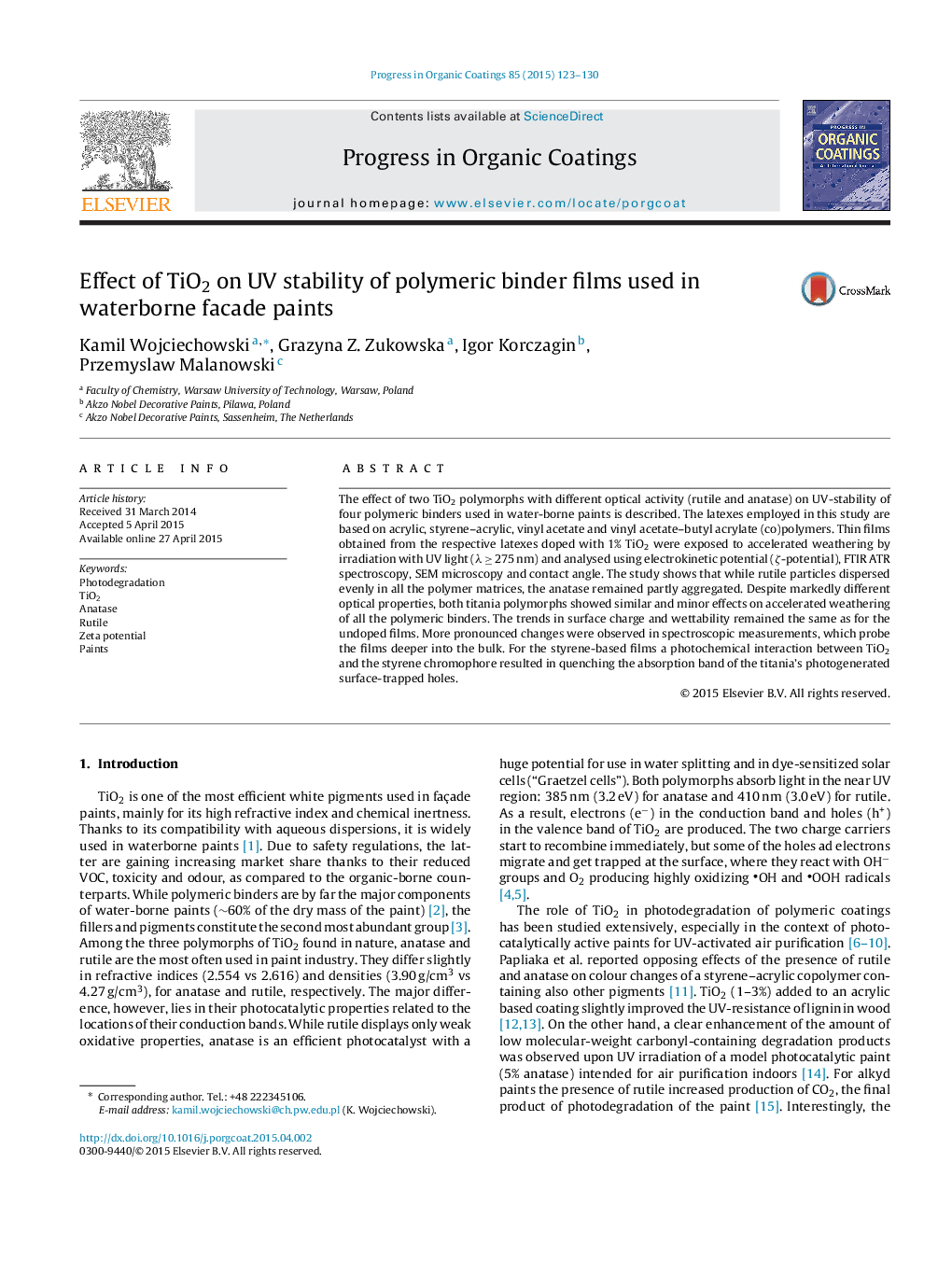| Article ID | Journal | Published Year | Pages | File Type |
|---|---|---|---|---|
| 692353 | Progress in Organic Coatings | 2015 | 8 Pages |
•Photodegradation of four TiO2-doped latex films is compared under the same conditions.•Latexes were acrylic, styrene–acrylic, vinyl acetate and vinyl acetate–butyl acrylate.•Two titania polymorphs were used: rutile and anatase, their effect on accelerated ageing was similar.•FTIR-ATR, UV–vis, SEM and contact angle complemented ζ potential measurements.•TiO2-doped vinyl acetate-based latexes were found most stable, similarly to the undoped films.
The effect of two TiO2 polymorphs with different optical activity (rutile and anatase) on UV-stability of four polymeric binders used in water-borne paints is described. The latexes employed in this study are based on acrylic, styrene–acrylic, vinyl acetate and vinyl acetate–butyl acrylate (co)polymers. Thin films obtained from the respective latexes doped with 1% TiO2 were exposed to accelerated weathering by irradiation with UV light (λ ≥ 275 nm) and analysed using electrokinetic potential (ζ-potential), FTIR ATR spectroscopy, SEM microscopy and contact angle. The study shows that while rutile particles dispersed evenly in all the polymer matrices, the anatase remained partly aggregated. Despite markedly different optical properties, both titania polymorphs showed similar and minor effects on accelerated weathering of all the polymeric binders. The trends in surface charge and wettability remained the same as for the undoped films. More pronounced changes were observed in spectroscopic measurements, which probe the films deeper into the bulk. For the styrene-based films a photochemical interaction between TiO2 and the styrene chromophore resulted in quenching the absorption band of the titania's photogenerated surface-trapped holes.
